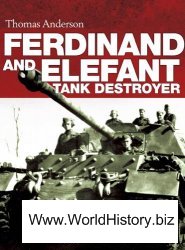As noted above, archaeologists use classifications whenever they want to count things, a process called enumeration. But what are they counting? Obtaining some reasonable estimate of the relative abundances of different classes of lithics, pottery, animals, or some other entities is one of the most common archaeological laboratory activities. However, it is not always obvious what the best measure of abundance is.
The reason for this problem is that the things archaeologists would like to count are typically fragmentary, and counting bone fragments, for example, is not the same thing as counting live animals. Two different bone fragments could come from the animal, or even the same bone. So, if we are interested in comparing the percentages of caribou at two sites, or the proportions of red-slipped pottery, what do we do?
Archaeologists have developed quite a variety of options for ‘counting’ things, but selecting the most appropriate one for a particular problem is not always easy. It depends on what indirect measurement is really of interest. For example, is our purpose in counting bone fragments to compare the relative frequencies of some species, among live animals, that the people at two different sites hunted? Or is it to estimate how much that species contributed to site occupants’ diet (in meat or calories)? Or is it to discover something about what they were doing with the carcass, in terms of butchering and selection of meat portions? Or are we just trying to learn something about site-formation processes by studying the degree of fragmentation of our faunal sample? Of course, we might be interested
|
Unretouched debitage | |||||||||
|
Flakes |
Blades | ||||||||
|
Complete |
Incomplete |
Complete |
Incomplete | ||||||
|
CO O CO Lo O ¦D "2 CO ?_ |
Random Dorsal Scars |
2 CO O CO Lo 2 O ¦D _C "cO '-O CO Cc |
C CD CO 2 CL E "cO CL |
_co C CD E (Ji 2 LL |
E O LO V D) C CD _l |
E O LO A D) C CD _l |
Proximal |
CO '-O CD |
_C0 To B |
Figure 1 Example of a sorting table for a taxonomic classification of unretouched flakes and blades.
|
Contexts | |
|
Context no. | |
|
Site no. | |
|
Grid coord. |
A |
|
Top elev. |
N |
|
Bottom elev. |
N |
|
Sed. texture |
C |
|
Sed. color |
C |
|
Context type |
C |
|
Strat. below |
A |
|
Strat. above |
A |
|
Lithics | |
|
Artifact no. Context no. | |
|
Type |
C |
|
Completeness |
C |
|
Retouch |
B |
|
Platform |
C |
|
Length (mm) |
N |
|
Width (mm) |
N |
|
Thickness (mm) N | |
|
Material |
A |
In more than one of these questions, but each calls for a somewhat different approach to quantification of abundance. How we answer them helps us decide among such measures as ‘number of identified specimens’ (NISP), ‘minimum number of individuals’ (MNI), or ‘estimated vessel equivalent’ (EVE).




 World History
World History









